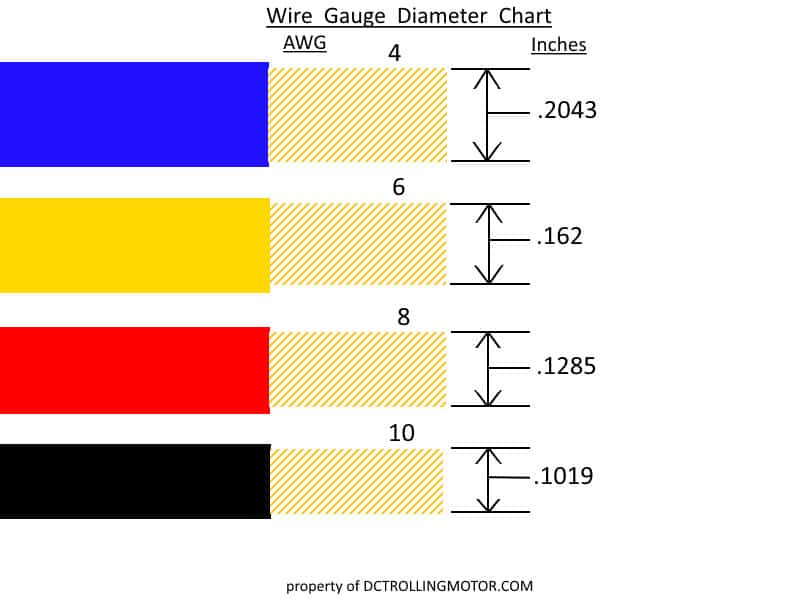Have you searched for information on wire gauge, but all you could find are vague descriptions for basic types of equipment? Regardless of the intimidating terms used by technicians, you’d be surprised to know that wire gauge is just a scale by which the overall thickness or diameter of a wire is measured.
You might ask, of what importance is the diameter of a wire if all I’m concerned about is the current passing through it? The answer to this question narrows down to the fact that all electrical wires have electrical resistance.
Electrical resistance causes an electrical current to flow through a wire, and as this occurs, the temperature of the wire increases. Therefore, the careless selection of wire thickness for a particular application can cause significant challenges.
For instance, if the thickness is too small, it will heat up long enough to affect the insulating material. While this is a major cause for a fire, you might be lucky enough to get away with just a short circuit. Things don’t get better for thicker wires.
If the wire is too thick, the electrical resistance reduces. This causes more current to flow through electrical systems, thereby damaging your appliances. Knowing how to estimate wire size is a good thing, but things become even better when you understand the technical terms used in the industry. These terms were created by standard organizations, one of which is the American Wire Gauge (AWG) system.
The American Wire Gauge (AWG)
The AWG, also known as Brown & Sharpe gauge, is the United States’ standard method for denoting the sizes of circular wires. While a few people have questioned the role of this standard, others agree that the AWG has been useful for determining the current-carrying capacity and resistivity of wires. Interestingly, the AWG accounts for both single and stranded wires.
There are forty-gauge sizes, ranging from No. 36 AWG to No. 0000 AWG. Each representation denotes the diameter of the wire. The diameter of a No. 36 AWG is 0.005 inches, while the diameter of a No. 0000 AWG is 0.46 inches.

From this convention, you may have noticed that a smaller gauge number corresponds to larger wire diameter. This convention has been a major cause of arguments amongst beginners.
AWG denotes the sizes based on the number of drawing operation required to attain a particular wire thickness. Therefore, a wire of smaller thickness would have undergone more drawing operation compared to a wire of larger thickness.
Also, you can quickly identify the gauge size of a wire by its cross-sectional area. Although the diameter of a stranded wire may appear to be larger than a single wire, the two wires might have the same gauge size.
This is because stranded wires consist of many individual strands, and it’s almost impossible to avoid the air gaps between these strands completely. By knowing the cross-sectional area of a wire, you can obtain the gauge size by matching your dimensions with those provided in a table by the American Society of Testing and Materials (ASTM) Standards.
Calculating Wire Size Requirement
Of what importance are the AWG and ASTM standards if you are unable to calculate the wire size requirement of your circuit? If you’ve taken the time to glance through the small document printed on your appliances, you’ll notice that most manufacturers indicate an amperage requirement.
It is the electrical current requirement needed to make electrical equipment work. If your circuit consists of many loads, you’ll have to sum up the individual amperage of all the loads.
Wires usually come with insulation. You will have to determine the temperature rating of this insulation. Not to worry, you can find these ratings in catalogs provided by manufacturers. It is a common practice these days for manufacturers to print rating information on wire insulation, especially on marine products.
You might also want to check out some of the standards set by the National Electrical Code (NEC) to ensure safe electrical practices. By matching this information with those provided by the Code of Federal Regulations, you can easily determine the suitable wire gauge for your circuit.
For a wire gauge calculator click here to go to Blue Sea Systems Wizard.
Conclusion
We hope this article Wire Gauge Explained has given you a detailed explanation of wire gauge. Now you can walk up to any dealer saying, ” I want an 8 AWG wire,” and he won’t think you are a novice.
Check out our article Best gauge wire for a 24 volt trolling motor?



